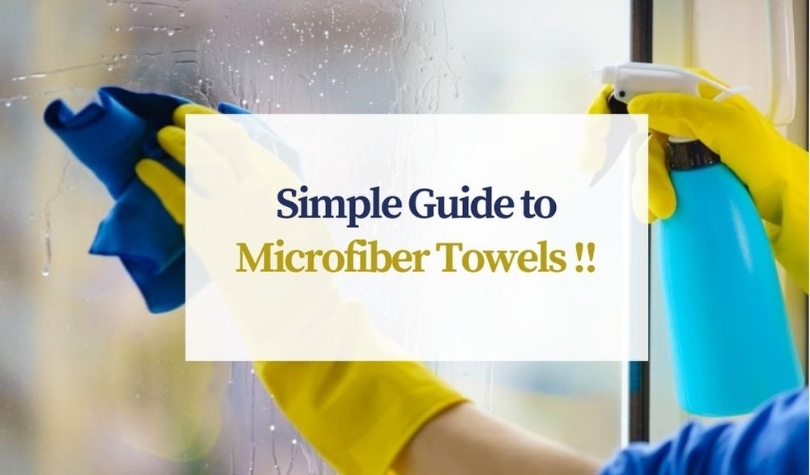A Simple Guide to Microfiber – Ingenious Cleaning Cloth:

Microfiber towels have revolutionized the cleaning sector. Even for routine household cleaning, they are becoming a preferred substitute for cotton and paper towels due to their remarkable absorbency, durability, and adaptability. However, regular cleaning is necessary to maintain optimal efficiency. A microfiber towel is a wise long-term investment because it can withstand over 50 washes with proper care. Here's how to maintain the best condition for yours.
Why Microfiber Towels Need Special Care
Why does microfiber work so well? The splits, which are microscopic fibers divided into several strands that improve absorbency and cleaning ability, are the key. But if not properly maintained, these same splits are fragile and can quickly clog or get destroyed. For these fibers to continue performing as intended, their structure must be preserved.
Two Rules You Must Never Break
To keep your towels absorbent and preserve the strength of the fabric.
Fabric softener clogs the fibers and decreases absorbency, so never use it. Avoid drying on high heat, as this may cause the microfibers to melt or become damaged.
Machine Wash the Right Way
Do you prefer washing in a machine? Take these actions:
Microfiber towels should be washed separately; avoid combining them with cotton or other fabrics.
Make use of a microfiber-specific cleaner or a gentle liquid detergent. To improve freshness and get rid of odors, add a little white vinegar.
Select "warm water" on the wash cycle to efficiently lift dirt and grime, and let the machine run through its entire cycle.
Gentle Hand Washing for Light Loads
For lightly soiled towels or small batches:
- Fill a basin or tub with warm water and mild detergent.
- Soak towels for 10–15 minutes.
- Gently rub stained areas by hand.
- Soak again for another 10 minutes.
- Rinse thoroughly in clean water.
- Wring out excess water gently
Smart Drying Techniques
Whether you air-dry or use a dryer, avoid damaging the microfiber:
- Do not leave towels under direct hot sunlight—this can melt the fibers.
- Air dry in a shaded, breezy area or
- Use a machine dryer on low heat only.
Storage Tips: Keep Them Separate
Once dry, fold and store microfiber towels in a designated space.
Avoid mixing them with cotton towels, as microfiber can pick up lint that blocks absorbency. Cross-contamination also reduces their effectiveness.
The Final Word: Handle With Care
Microfiber towels are powerful cleaning tools—but only if you treat them right. By following these care tips, you'll preserve their absorbency, extend their lifespan, and get the best value from your investment.







